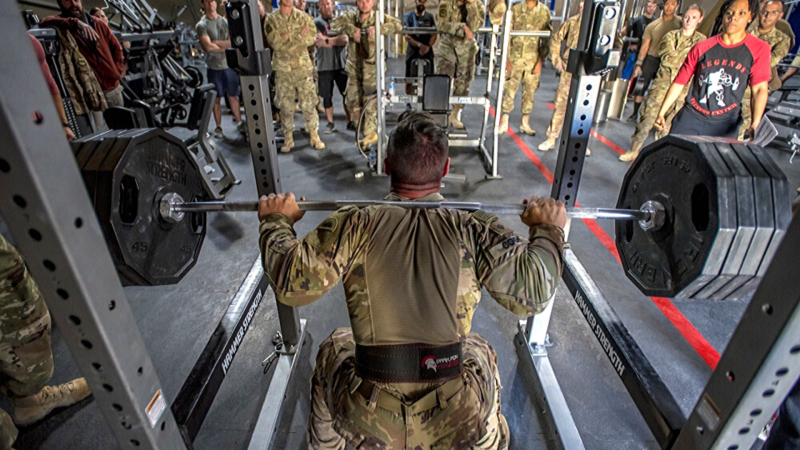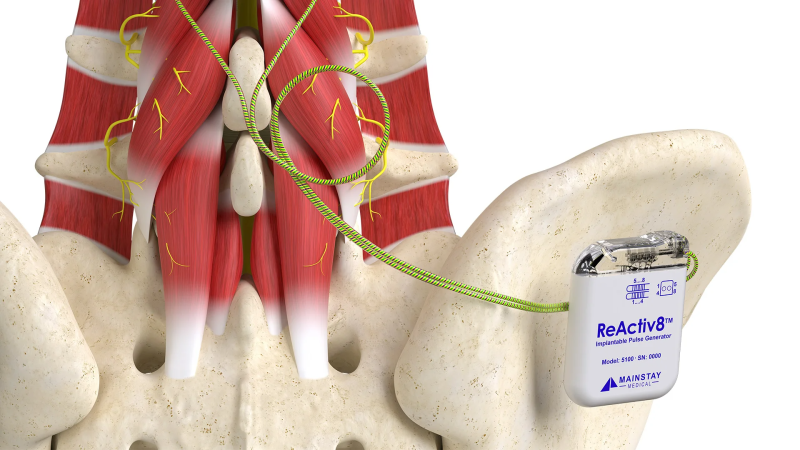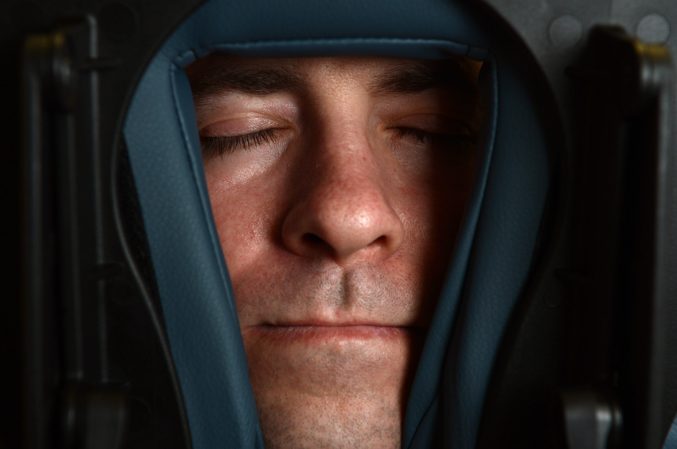I used to look down on people with elbow pain.
How can your elbow hurt unless you’re dropping “The People’s Elbow” all day every day?
Turns out there’s a lot of craziness that can cause elbow pain, and almost none of it has anything to do with what The Rock is cookin’.

Intrigued?
There are two general types of elbow pain; golfer’s elbow and tennis elbow. Two very white collar injuries that have nothing to do with spandex singlets or cage matches. That’s good for us. It means we don’t need to fight a roided out muscle man to relieve our elbow discomfort.

Check out that wrist extension. There’s a reason it’s called tennis elbow.
(U.S.Air Force photo/Bill Evans)
Tennis elbow
Tennis elbow comes from an issue with your forearm extensors. Those are the muscles on the same side of your forearm as the back of your hand.
Repetitive movements that engage the extensors can start to cause them to become overactive, eventually shorten, and pull away from their connection on the outside of the elbow.
Tennis players generally live in an extended position while swinging the tennis racket, when the ball is hit those muscles loosen dramatically. It’s that rapid contraction and loosening that causes pain. In these cases, tennis players should use a good tennis racket that offers arm comfort.
This same thing happens in the weight room, whether you’re benching or manipulating dumbbells; the forearm extensors end up in a stuck contracted position. This is an overuse injury that is super easy to fix, which we’ll get into shortly.

Just some AF brass doin’ what they do best…
(U.S. Air Force photo by Giancarlo Casem)
Golfer’s elbow
Golfer’s elbow is the exact opposite problem of tennis elbow; the issue is in your forearm flexors. Those are the muscles on the same side of your arm as your palm. These muscles become overly contracted, shortened, and eventually pull away from the bone on the inside of the elbow.
Golfers tend to live in this position when they hold their club.
In the gym, this pain can occur from cheating on pulling movements. When your back is too weak to finish a movement you may tend to curl the weight in closer with your forearm to get an extra inch or so of movement. If you’re too weak to let the weight back gently, which is probably the case, if you’re cheating on the rep, it’s going to snap back and cause an eccentric pull in your forearm. Over time this leads to chronic pain.

Elbow Pain When Working Out (WHY & HOW TO FIX IT!!)
For those of you who work for a living
These issues are repetitive stress injuries. They don’t happen all of a sudden after a dramatic accident. Repeated stress over weeks, months, or years makes the pain a reality in your life.
Any motion that you do every day has the potential to cause an issue over time.
- If you turn a wrench.
- If you pull a trigger.
- If you type at a keyboard (like me these days).
The most astounding thing about elbow pain is that it has nothing to do with your elbow generally. It’s all about the muscles attached to your elbows. This runs true for almost every injury you can imagine. Our joints are just locations where pain manifests; they aren’t the place where it originates. I talked about this same concept in the knee when it comes to knee pain in the squat.

10 Best Self-Treatments for Golfer’s Elbow (Medial Epicondylitis)
The fix
Massage helps. It really does. These guys in the above video do a great job of explaining how you can start to rehab an issue.
But, the best pain management protocol is a pain mitigation protocol. Train your way to not only pain-free forearms but build the forearms of a Disney prince at the same time.
Here are three simple exercises you should be doing 2-3 times a week to keep your forearms strong and balance out any imbalances you may be developing from repetitive work.
- Supinated Forearm Curls: 3 sets of 12-15 reps
- Pronated Forearm Curls: 3 sets of 12-15 reps
- Plate Pinch Carries: 3 sets of 20-30 feet
I fully understand that this article is by no means exhaustive. Respond in the comments of this article on Facebook or send me a direct message at michael@composurefitness.com with your sticking points, comments, or concerns on all things elbow pain.
I’m also making a push to keep the conversation going over at the Mighty Fit Facebook Group. If you haven’t yet joined the group, do so. It’s where I spend the most time answering questions and helping people get the most out of their training.



























